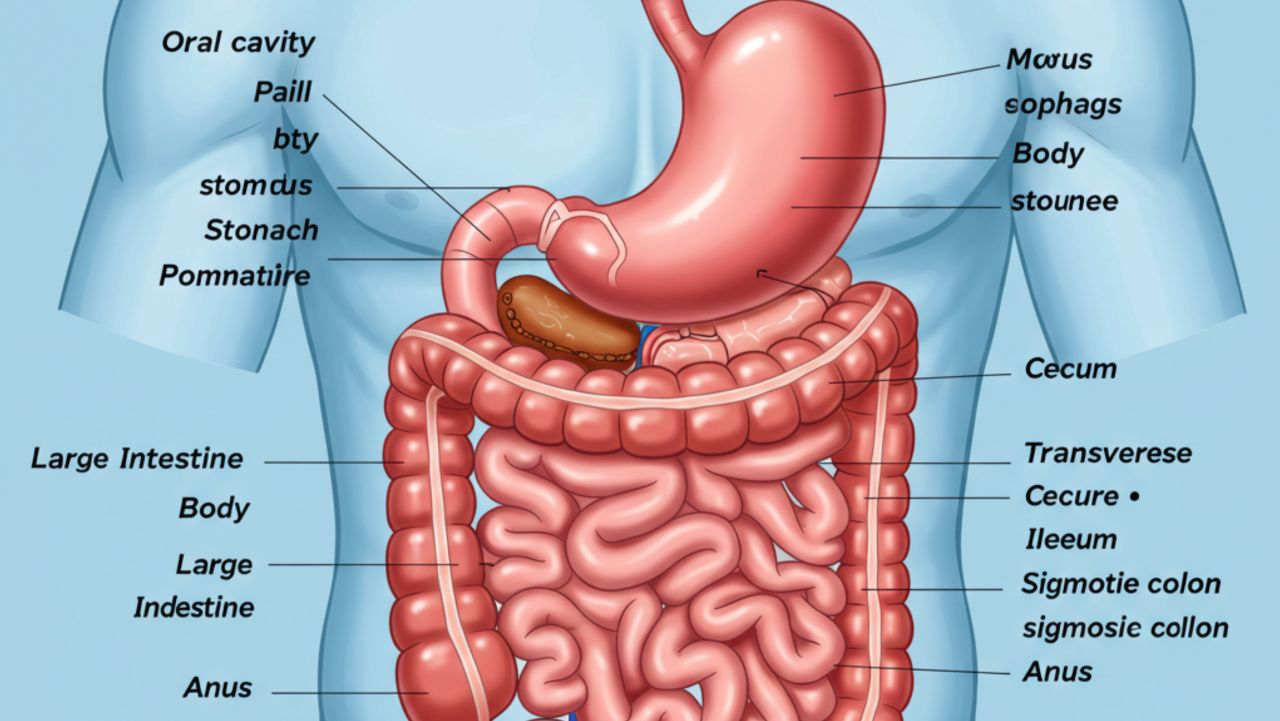Prakrta Ajirna (Indigestion) in Ayurveda: Causes, Symptoms & More
Ayurveda, the ancient science of life, defines health as a state of balance between the Doshas (biological humors), Agni (digestive fire), Dhatus (tissues), and Malas (waste products). Of these, Agni plays a central role in digestion and metabolism, influencing overall physiological functions. 
Ayurveda emphasizes the significance of Agni, asserting that all diseases stem from Mandagni (weak digestive fire). When Agni is weakened, it leads to the production of Ama, an intermediate substance that ferments, becoming sour (shukta) and eventually turning into toxic substances.
Disruption of Agni results in Ajirna (indigestion), which can serve as a precursor to various systemic disorders such as Grahani (intestinal disorders) and Amlapitta (acid reflux).
Ajirna is marked by incomplete digestion, causing symptoms like abdominal discomfort, bloating, nausea, heaviness, altered bowel movements, and the formation of Ama (toxic metabolic by-products). Ayurveda classifies Ajirna based on the predominant Dosha and the symptoms present in the individual.
Definition of Indigestion (Ajirna) in Ayurveda
Ajirna is derived from the Sanskrit word “Jirna”, meaning digestion. Ajirna refers to the incomplete or impaired process of digestion and metabolism, resulting in the accumulation of Ama (toxins) in the body.
It is a pathological condition characterized by incomplete or impaired digestion due to Agnimandya (weakened digestive fire), primarily associated with the Pittadhara Kala (digestive region).
In Ayurveda, Ajirna leads to the accumulation of Ama (undigested metabolic toxins), which undergoes fermentation and putrefaction, causing systemic toxicity.
This condition is considered the root cause of various metabolic and gastrointestinal disorders. In conventional medicine, Ajirna is closely related to dyspepsia, which is derived from the Greek words dys (bad) and pepsis (digestion), referring to upper gastrointestinal discomfort and impaired digestive function.
This explanation highlights how Ajirna can cause both local digestive issues and broader systemic imbalances, connecting the concepts of digestion, toxins, and overall health in Ayurveda.
The Different Types of Ajirna (Indigestion)
The formation of Ama (toxic metabolic by-products) is a key aspect of Ajirna (indigestion) in Ayurveda. Based on the predominant Dosha and specific symptoms, Ayurveda classifies Ajirna into several types:
- Amajirna – Kapha-dominant indigestion, characterized by symptoms like heaviness, nausea, and excessive salivation. Ama accumulates in the stomach, leading to sluggish digestion and a sense of lethargy.
- Vidagdhajirna – Pitta-dominant indigestion, marked by acidity, heartburn, and sour belching. This type of indigestion can lead to inflammation in the digestive tract, causing irritation and discomfort.
- Vishtabdhajirna – Vata-dominant indigestion, leading to bloating, flatulence, and abdominal pain. This type is often accompanied by dryness and a sense of emptiness in the stomach, as the digestive fire is scattered.
- Rasasheshajirna – Incomplete digestion of Ahara Rasa (the essence of food), resulting in belching, heaviness, and lethargy. This type of indigestion can also cause a feeling of food stagnation in the body, leading to a lack of energy.
- Dinapaki Ajirna – Delayed digestion, where food remains undigested until the following day, but without causing significant distress. While not immediately painful, this condition can lead to sluggishness and fatigue over time due to improper digestion.
These additional lines further illustrate the varied nature of Ajirna in Ayurveda and the impact it can have on overall health.
Causes of Ajirna (Indigestion)
Ajirna is primarily caused by Agnimandya (weakened digestive fire), which results from various dietary, lifestyle, psychological, and environmental factors.
Ayurveda emphasizes that improper digestion leads to the formation of Ama (toxins), which further contributes to various systemic diseases. The etiological factors of Ajirna can be broadly classified as follows:
Dietary Factors (Aharaj Hetu)
- Atyambupaana – Excessive consumption of water or liquids, especially immediately after meals, leading to suppression of Agni. This weakens the digestive fire and delays the breakdown of food.
- Adhyashana – Overeating or consuming food before the previous meal is fully digested, overwhelming the digestive system. This leads to the accumulation of undigested food, which forms Ama.
- Vishamashana – Irregular eating habits, such as consuming food in excessive or inadequate amounts and at inappropriate times, disturbing digestion. This irregularity impairs the body’s ability to properly absorb nutrients.
- Samshana – Intake of incompatible food combinations, unwholesome diet, stale, refrigerated, or frozen foods, leading to digestive imbalances. Incompatible foods disrupt the normal functioning of Agni, resulting in toxic accumulation.
- Manda Charvana – Improper mastication and inadequate salivation, resulting in inefficient digestion and absorption. This prevents the stomach from properly processing food, leading to incomplete digestion and Ama formation.
Lifestyle Factors (Viharaj Hetu)
- Swapnaviparyaya – Sleep disturbances, including sleeping during the day and insomnia at night, leading to digestive weakness. Poor sleep cycles disrupt the natural rhythms of digestion and metabolism.
- Vegavidharana – Suppression of natural urges, such as hunger, thirst, flatus, and defecation, which disturbs digestive physiology and leads to dysfunction. Delayed elimination further burdens the digestive system.
- Avyayama – Lack of physical activity, resulting in sluggish metabolism and impaired digestive function. Physical inactivity prevents the proper movement of digestive fluids and wastes, hindering Agni.
- Atyashrama – Excessive physical or mental exertion, weakening digestive capacity and reducing Agni. Overexertion leads to fatigue, diminishing the body’s ability to process and metabolize food properly.
Psychological Factors (Manasika Hetu)
- Irshya – Envy or jealousy while eating, which disrupts digestive secretions and affects digestion. Negative emotions can create an imbalance in the mind-body connection, impairing Agni.
- Bhaya – Fear or panic, leading to stress-induced gastrointestinal disturbances and imbalanced digestion. Stress activates the fight-or-flight response, diverting energy away from digestion.
- Krodha – Anger and emotional distress, impairing Agni and altering digestion. Emotional turmoil can create blockages in the digestive channels, further hindering the digestive process.
- Chinta – Stress and anxiety, negatively affect gut motility and secretion. Persistent worry disturbs the nervous system, which plays a significant role in regulating digestive function.
- Shoka – Grief and sadness, which lead to digestive sluggishness and reduced Agni. Prolonged sadness depletes energy and disrupts the balance of digestive forces.
Environmental and Seasonal Factors (Kalaj Hetu)
- Ritu Parivartan – Seasonal variations affecting digestive strength, such as weak Agni during Varsha Ritu (monsoon). During this time, the digestive fire is naturally weaker, making digestion more susceptible to imbalance.
- Asatmya Desha Kala – Incompatibility with climatic and geographical conditions, which can affect digestion and lead to imbalance in Agni. Environmental factors such as extreme heat or cold can disturb the body’s ability to properly digest food.
Iatrogenic and Pathological Factors
- Atyukta Panchakarma – Improper administration of Panchakarma therapies (e.g., excessive Virechana, Vamana, or Snehana) leading to digestive imbalances. Overuse or incorrect application of therapies can disturb the digestive fire and metabolism.
- Deerghakalika Vyadhi – Chronic debilitating diseases weakening Agni and contributing to indigestion and digestive disorders. Long-term illnesses exhaust the body’s digestive power, leading to chronic digestive issues.
Modern Medicine Correlation
Modern medicine correlates Ajirna with dyspepsia, which may arise due to overeating, improper food combinations, rapid eating, lack of mastication, excessive alcohol consumption, smoking, constipation, emotional stress, and sedentary habits.
These factors contribute to dysfunction in the digestive system, leading to impaired digestion and discomfort. Ayurveda provides a holistic approach to digestion by identifying and addressing these etiological factors, aiming to restore Agni and prevent the formation of Ama.
By correcting the root causes, Ayurveda promotes lasting digestive health and balance.
Causes for Different Types of Ajirna (Indigestion)
Ajirna, or indigestion, is a common gastrointestinal disorder described in Ayurveda, primarily caused by the vitiation of the Doshas — Vata, Pitta, and Kapha. It manifests due to improper digestion of food, leading to various physiological disturbances.
Based on the predominance of the vitiated Doshas and other contributing factors, Ajirna is classified into different types. Amajirna, Vidagdhajirna, and Vishtabdhajirna are the main types of Ajirna.
1. Amajirna
Amajirna occurs due to the vitiation of Kapha Dosha. It is characterized by symptoms such as puffiness around the eyes and face, frothy and excessive salivation, nausea, repeated belching with the odor of ingested food, and a feeling of heaviness in the body.
This condition primarily results from sluggish digestion and excessive mucus production, leading to an accumulation of undigested food (Ama) in the gastrointestinal tract.
Additionally, it causes a dull or congested feeling in the stomach and often leads to difficulty in expelling waste.
2. Vidagdhajirna
Vidagdhajirna is caused by the vitiation of Pitta Dosha, leading to hyperacidity and excessive heat in the digestive system.
Clinical manifestations include a burning sensation in the chest and throat, excessive thirst, sour eructations, nausea, giddiness, and fainting.
The condition arises due to improper digestion, resulting in the fermentation of undigested food, leading to acid reflux and discomfort. This type of indigestion is often accompanied by an irritable or inflamed feeling in the stomach and intestines.
3. Vishtabdhajirna
Vishtabdhajirna results from the vitiation of Vata Dosha, causing disturbances in gastrointestinal motility. It is characterized by abdominal pain, bloating, gaseous distension, body ache, fatigue, and difficulty in stool and flatus elimination.
This condition is commonly associated with erratic eating habits and excessive consumption of dry and rough foods, leading to impaired digestion and absorption.
It often presents with discomfort and irregular bowel movements, exacerbating the overall feeling of heaviness in the abdomen.
4. Rasasheshajirna
Rasasheshajirna occurs when a portion of the ingested food remains undigested, primarily affecting the Ahara Rasa (nutrient absorption process).
It is typically caused by excessive consumption of heavy foods or eating late at night, leading to symptoms such as belching, heaviness in the chest, and increased salivation.
Unlike other types, most of the food is digested, but residual undigested matter lingers, causing discomfort. This condition often results in a sense of fullness and sluggishness after meals, despite normal digestion of a portion of the food.
5. Dinapaki Ajirna
Dinapaki Ajirna, as described by Vijayarakshita, is a mild form of indigestion in which food digestion is delayed but completes within one day and one night. It primarily occurs due to the excessive quantity or improper timing of food intake.
The condition is self-limiting, requiring only time for digestion to complete without causing significant harm. While uncomfortable, this form of indigestion does not generally cause long-term issues and resolves as the digestive process completes.
6. Prakrita Ajirna
Prakrita Ajirna, also mentioned by Vijayarakshita, refers to a state of delayed digestion that persists until the consumed food is fully processed.
Unlike other forms of indigestion, it does not exhibit classical Ama-related symptoms such as tympanitis. Instead, the individual experiences natural signs of digestion completion, including hunger, thirst, and bowel movements.
This type of indigestion tends to resolve once digestion has naturally progressed and does not lead to significant discomfort or imbalance.
Causes of Visuchika, Alasaka, and Vilambika
Amajirna, Vidagdhajirna, and Vishtabdhajirna can produce diseases named Visuchika, Alasaka, and Vilambika, respectively, depending on the nature and impact of the disturbance in digestion. These diseases are manifestations of deeper systemic imbalances caused by the primary digestive dysfunction.
1. Visuchika
Visuchika is characterized by vomiting and loose motion, which can present with different symptoms depending on the predominant Dosha.
Vata predominant symptoms:
- Shul (pain)
- Anaah (fullness of abdomen)
- Bhram (giddiness)
- Kamp (tremors)
- Stambh (stiffness)
Pitta predominant symptoms:
- Jwara (fever)
- Atisara (diarrhea)
- Antardaah (burning-like sensation)
- Trushna (thirst)
- Murchha (unconsciousness)
Kapha predominant symptoms:
- Vomiting
- Angaguruta (heaviness in the body)
- Vaaksang (difficulty in speaking)
- Shtheevan (slowness of body movement)
2. Alasaka
Alasaka is characterized by extreme abdominal distension and mental confusion. The affected individual experiences severe discomfort, often crying out in distress.
Due to obstruction in the lower digestive tract, gas is unable to pass downward and instead moves upward, causing further discomfort.
Additionally, the condition is marked by the absence of bowel movements and flatus, accompanied by excessive thirst and frequent belching.
This condition may lead to feelings of bloating and helplessness, as the individual may not be able to relieve the pressure caused by the obstruction.
3. Vilambika
Vilambika primarily affects individuals with a weak digestive system, often due to the suppression of natural urges (Vegavidharana). In this state, due to vitiated Kapha and Vata, food remains stagnant in the stomach, unable to be expelled either through vomiting or purgation.
As a result, undigested food accumulates, leading to obstruction of bodily channels (Srotas). When vitiated Doshas infiltrate these obstructed pathways, they begin to circulate abnormally throughout the body, causing widespread dysfunction.
In severe cases, this leads to Dandalasaka, a state where the body becomes rigid, resembling a log of wood. Classical texts indicate that it is considered an untreatable situation, as it signifies a terminal stage of systemic derangement, where the body’s channels and functions are irreversibly compromised.
Ayurvedic Treatments for Ajirna (Indigestion)
Here are some Ayurvedic treatments for Ajirna (Indigestion) that can help restore digestive balance and promote overall well-being.
1. Langhana (Fasting and Light Diet Therapy)
- Ama Ajirna: Fasting with warm water or herbal infusions to promote digestion and eliminate toxins, allowing the digestive system to reset.
- Vidagdha Ajirna: A light diet with cooling herbs to reduce heat and balance Pitta dosha, helping to calm inflammation in the digestive tract.
2. Pachana and Deepana (Digestive and Carminative Herbs)
- Shunthi (Zingiber officinale): Stimulates Agni (digestive fire) and reduces bloating, enhancing the body’s ability to break down food.
- Trikatu (Black pepper, long pepper, ginger): Enhances digestion and helps balance the digestive process, promoting smoother digestion and absorption of nutrients.
- Hingu (Asafoetida): Relieves bloating and abdominal discomfort, promoting better digestion and reducing the buildup of gas in the gut.
3. Herbal Formulations
- Triphala Churna: Detoxifies the body, improves digestion, and enhances nutrient absorption, supporting overall digestive health.
- Ajamoda (Carum copticum) + Jeeraka (Cumin) + Saindhava (Rock Salt): Improves gut motility and alleviates digestive issues, promoting smoother bowel movements and reducing discomfort.
4. Panchakarma Therapies
- Vamana (Emesis Therapy): Recommended for Kapha-dominant Ajirna, helps to expel excess mucus and toxins, clearing the upper digestive tract and improving Agni.
- Virechana (Purgation Therapy): Used for Pitta-dominant Ajirna to eliminate excess heat and bile, restoring balance and supporting digestive function.
- Basti (Medicated Enema): Effective for Vata-dominant Ajirna, it balances the Vata dosha and promotes proper elimination, ensuring the smooth flow of bodily waste.
5. Lifestyle Changes
- Try to eat your meals at the same time each day to maintain a steady routine and regulate digestion, helping your body to predict and prepare for meals.
- Eat at a relaxed pace, without rushing, so your body can properly digest the food and prevent overeating or indigestion.
- Enjoy your meals, but be mindful of portion sizes and moderation, as overeating can disrupt digestion and cause discomfort.
- Listen to your body and avoid foods that don’t sit well with you to prevent further discomfort and promote balanced digestion.
- If possible, limit the use of NSAIDs (Non-Steroidal Anti-Inflammatory Drugs) and consult a doctor before taking them regularly, as they can irritate the digestive lining.
- Reduce stress and emotional strain, as they can negatively impact digestion and overall well-being, and practice mindfulness techniques to support digestive health.
Ajirna (indigestion) in Ayurveda highlights the importance of Agni (digestive fire) for digestive health. It occurs due to impaired digestion, leading to the formation of Ama, the root cause of many diseases. Ayurvedic texts offer a detailed approach to understanding and managing Ajirna, focusing on restoring Agni and eliminating Ama.
References:
- Indigestion-induced hyperacidity (Vidagdhajirna) treated with Ayurveda therapy: A single case study(1)
- ETIOPATHOLOGICAL STUDY OF MOST COMMON DIGESTIVE DISORDER
AJIRNA (INDIGESTION)(2) - Ajirna: An Ayurvedic perspective on Indigestion(3)
- Prevalence of Manasikahetu (Psychological factors) in patients suffering from Ajirna (Indigestion)(4)


























